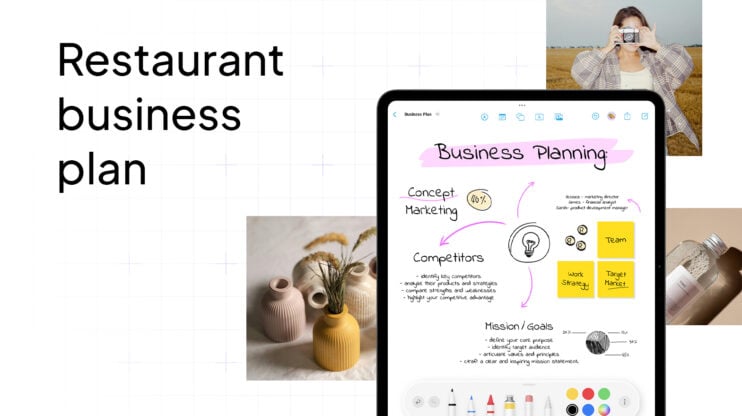Leveraging ecommerce merchandising is crucial for standing out in a crowded marketplace. This article delivers effective strategies that improve product presentation and elevate the overall shopping experience, directly impacting your bottom line.
By implementing these insights, you’ll be equipped to optimize your online store, engage customers more effectively, and drive sales growth. Whether you’re a seasoned retailer or new to ecommerce, understanding these merchandising techniques is essential for achieving sustained success in the digital age.
FAQ
What are common job roles in this field?
Common job roles in merchandising include merchandiser, merchandising manager, visual merchandiser, category manager, buyer, product planner, and allocation analyst. Each role focuses on specific aspects such as product selection, presentation, pricing, and inventory management to optimize sales and customer satisfaction.
What is the average salary for these positions?
The average salary varies by role and experience level. Entry-level merchandisers typically earn $40,000–$50,000 annually, while experienced merchandising managers and category managers can earn $70,000–$120,000. Salaries also depend on the industry, location, and company size.
Can you provide examples of effective strategies?
Effective merchandising strategies include creating visually appealing product displays, leveraging data analytics for demand forecasting, optimizing pricing strategies, and personalizing product recommendations based on customer preferences. Collaborating with marketing teams to align promotions with customer behavior trends is also impactful.
What are the key responsibilities of a merchandiser?
Merchandisers ensure the right products are available at the right time, price, and location. Key responsibilities include inventory management, analyzing sales data, planning product assortments, coordinating with suppliers, and executing promotional strategies to maximize sales.
Are there any recommended courses available?
Yes, courses on platforms like Coursera, LinkedIn Learning, and Udemy cover merchandising topics. Examples include “Retail Merchandising” by Rutgers University, “Introduction to Visual Merchandising” on Udemy, and “Retail Fundamentals” by Dartmouth on edX. Industry certifications like the NRF Retail Industry Fundamentals credential are also beneficial.
What are best practices to follow?
Best practices in merchandising include using data-driven insights for decision-making, maintaining consistency in branding across all channels, prioritizing customer experience, and staying updated on trends. Building strong supplier relationships and optimizing supply chain efficiency are also critical.
Where can I find informative PDFs on the topic?
Informative PDFs on merchandising are often available through industry associations like the National Retail Federation (NRF), consulting firms like McKinsey, or university business schools. Searching for white papers, reports, and guides on merchandising via Google Scholar or industry blogs is also helpful.
How does site merchandising differ from others?
Site merchandising focuses on optimizing online product presentation and navigation to drive ecommerce sales. Unlike traditional merchandising, it involves managing digital assets, A/B testing layouts, and enhancing the customer journey through tools like search engine optimization (SEO) and personalization algorithms.
What are the main types of merchandising?
The main types of merchandising include product merchandising (focusing on product selection and placement), visual merchandising (enhancing product appeal through displays), retail merchandising (store layout and stocking), and digital merchandising (optimizing online product presentation).
What does a merchandising manager typically handle?
A merchandising manager oversees the end-to-end process of product planning, selection, pricing, and promotion. They manage teams, coordinate with suppliers, monitor sales performance, and ensure merchandising strategies align with business goals and market trends

Create your online store in minutes!
Looking to sell online? Develop and launch your store with 10Web AI Ecommerce Website Builder.
Understanding ecommerce merchandising
Ecommerce merchandising is the art and science of presenting products in an online store to boost sales and enhance the shopping experience. It involves strategically arranging, displaying, and promoting items to catch customers’ attention and guide them toward purchases.
When you visit an online store, ecommerce merchandising influences what you see and how you interact with products. It shapes the entire customer journey, from homepage to checkout.
Key elements of ecommerce merchandising include:
- Product selection and categorization
- Visual presentation (photos, videos, 3D models)
- Pricing and promotions
- Product descriptions and details
- Search functionality
- Personalized recommendations
Effective merchandising makes it easy to find what you’re looking for and discover new items you might like. It creates a smooth, enjoyable shopping experience that encourages you to buy.
Personalization plays a significant role in modern ecommerce merchandising. Online stores use data about your browsing history, past purchases, and preferences to show you relevant products and offers.
Visual appeal is crucial in ecommerce merchandising. High-quality images, engaging product videos, and attractive layouts help capture your attention and showcase items in their best light.
By mastering ecommerce merchandising techniques, online retailers can increase sales, improve customer satisfaction, and stand out in a crowded digital marketplace.
Ecommerce merchandising vs traditional visual merchandising

Ecommerce merchandising and traditional visual merchandising have distinct approaches to product presentation and customer engagement. While both aim to boost sales, they employ different tactics suited to their unique environments.
Traditional merchandising
Traditional visual merchandising relies on physical store layouts and displays to attract customers. It grabs attention by using eye-catching window displays, strategic product placement, and in-store promotions. You’ll find carefully arranged shelves, mannequins showcasing outfits, and promotional signage throughout the store.
Color coordination and lighting play key roles in creating an inviting atmosphere. Store layout guides customer flow, with popular items often placed at the back to encourage browsing. Seasonal displays and limited-time offers create urgency and excitement.
Staff interactions are vital, allowing for personalized recommendations and immediate assistance. Traditional merchandising also leverages multi-sensory experiences, letting customers touch, smell, and try products before buying.
Ecommerce merchandising
Ecommerce merchandising focuses on digital presentation and user experience. You interact with products through high-quality images, detailed descriptions, and sometimes 3D models or augmented reality features. Product pages are designed for easy navigation and quick information access.
Personalization is a major advantage of ecommerce. Algorithms analyze your browsing history and preferences to show tailored product recommendations and offers. Search functions and filters help you quickly find exactly what you’re looking for.
Digital storefronts can be updated instantly, allowing for real-time inventory management and dynamic pricing. User-generated content like reviews and ratings provide social proof and help inform your decisions.
Cross-selling and upselling are achieved through “related products” sections and bundle deals. Email marketing and retargeting ads keep you engaged even after leaving the site.
Key concepts of ecommerce merchandising
Ecommerce merchandising focuses on creating an engaging online shopping experience. It involves several key elements that work together to guide customers through their purchase journey.
Branding
Your brand identity sets you apart in the crowded online marketplace. A strong brand creates a memorable impression and builds customer loyalty.
A unique brand voice speaks to your target audience through your product descriptions, email marketing, and social media posts. Sharing your brand story can help connect with customers on an emotional level.
User-friendly website design and navigation
A well-designed website is crucial for guiding shoppers to the products they want. Clean, uncluttered layouts are easy to scan. Clear category labels and a logical site structure help shoppers find products intuitively. Search bars are best in a prominent location, typically the header.
Make sure your site is mobile-responsive for shoppers on smartphones and tablets.
Simplifying your checkout process helps to reduce cart abandonment. Offering guest checkout and a variety of payment options removes barriers to purchasing.
High-quality product images and videos
Visual content is key to selling products online. Professional photography showcases your items in the best light. Inform customers with images of multiple angles and close-up shots of important details. Consistent backgrounds and styling create a consistent, visually appealing look throughout the site.
Lifestyle images show products in use to help customers envision owning them. For complex items, a 360-degree view or short demo video can help bridge the gap between real-life customers and online shopping. These can also answer common questions and reduce returns.
Engaging product descriptions
Product descriptions should paint a vivid picture for potential buyers. Start with a brief overview of key features and benefits. Break longer descriptions into scannable bullet points or short paragraphs.
Since online retailers can’t rely on senses like smell or touch, sensory language that describes how a product looks, feels, or works can help make online shopping more like a traditional in-store experience. Address common customer questions or concerns within the description. Include specific details like dimensions, materials, and care instructions.
Personalization
Tailoring the shopping experience to individual customers helps boost engagement and sales. Ecommerce merchandising uses data from past purchases and browsing history to recommend relevant products.
Implementing personalized search results based on user preferences helps shoppers navigate and find desired products at a glance.
Create targeted promotions for different customer segments. Offer loyalty programs with personalized rewards to encourage repeat purchases.
Ecommerce merchandising strategies and concepts

Online stores often use a mixture of general strategies that can work for any type of ecommerce merchandising. These approaches help increase product visibility, attract customers, and boost sales.
Leveraging customer data for personalization
Customer data enables ecommerce businesses to tailor shopping experiences. Companies can create personalized interactions that boost engagement and sales by analyzing purchase history, browsing behavior, and preferences.
Personalized product recommendations
Product recommendations based on customer data are a key personalization strategy. Ecommerce platforms use algorithms to suggest items similar to past purchases or products viewed. These suggestions appear on product pages, in search results, and in email campaigns.
You might see “Customers who bought this also bought” sections or personalized homepage displays. Some sites use collaborative filtering, comparing your behavior to similar customers. Others use content-based filtering, focusing on product attributes you’ve shown interest in.
Personalized recommendations can increase average order value and conversion rates. They help you discover relevant products you might have missed otherwise.
Data-driven insights and predictive analytics
Ecommerce companies use customer data to gain insights and predict future behavior. This information guides inventory decisions, pricing strategies, and marketing campaigns.
Predictive analytics helps forecast which products you’re likely to buy next. It can also estimate when you might make a purchase. This allows businesses to send timely offers or reminders.
You benefit from more relevant promotions and a smoother shopping experience. For example, a site might show you search results tailored to your preferences or adjust product sorting based on your past interactions.
Companies also use data to identify trends and improve their product offerings. This ensures you have access to items that match your interests and needs.
Effective product catalog management
Product catalog management forms the backbone of successful ecommerce merchandising. It involves organizing and presenting your inventory in a way that enhances the customer experience and boosts sales.
Inventory management strategies
Keep your product catalog up-to-date by tracking stock levels in real time. Use automated inventory systems to prevent overselling and stockouts. Set reorder points for each product to maintain optimal stock levels.
Implement a first-in-first-out (FIFO) approach to manage perishable or time-sensitive items. This ensures older stock is sold before newer arrivals, reducing waste and maximizing profits.
Consider dropshipping for products with uncertain demand. This method allows you to offer a wider range of items without holding inventory, reducing risk and storage costs.
Product grouping and curation
Group related products together to improve navigation and increase cross-selling opportunities. Create categories based on product type, use case, or customer preferences.
Use tags to make products easily searchable. Apply multiple tags to each item, considering attributes like color, size, material, and style.
Curate collections for specific seasons, trends, or customer segments. Highlight best-sellers, new arrivals, and sale items to draw attention to key products.
Feature complementary products on individual product pages. This can boost average order value and enhance the shopping experience.
Enhancing conversion rate through merchandising
Effective merchandising strategies can significantly boost your ecommerce conversion rates. By focusing on product presentation and leveraging customer feedback, you can create a more compelling shopping experience.
Strategic product placement
Place your best-selling and high-margin products prominently on your homepage and category pages. Use eye-catching banners and featured product sections to draw attention to these items. Group related products together to encourage cross-selling and upselling.
Implement a “Frequently Bought Together” feature to suggest complementary items. This can increase average order value and conversion rates.
Optimize your product sorting options. Allow customers to filter by price, popularity, and relevance. Make sure your search function returns accurate and helpful results.
Use high-quality images and videos to showcase your products from multiple angles. Include zoom functionality so shoppers can examine details closely.
Utilizing social proof and reviews
Display customer reviews prominently on product pages. Highlight both positive and negative feedback to build trust and credibility. Include star ratings and the total number of reviews for each item.
Feature user-generated content like customer photos and videos. This gives shoppers a real-world look at your products in use.
Add a “Customers Also Bought” section to show popular product combinations. This social proof can influence buying decisions and boost conversions.
Showcase testimonials from satisfied customers on your homepage and throughout your site. Use real names and photos when possible to increase authenticity.
Implement a review request system to gather more feedback. Send follow-up emails asking customers to rate their purchases and share their experiences.

Create your online store in minutes!
Looking to sell online? Develop and launch your store with 10Web AI Ecommerce Website Builder.
Marketing techniques in ecommerce merchandising
Effective marketing techniques are essential for driving sales and increasing customer engagement in ecommerce. These strategies help attract shoppers, boost conversions, and maximize revenue.
Effective use of promotions and discounts
Promotions and discounts can be powerful tools to entice customers and drive sales. Time-limited offers create a sense of urgency, encouraging quick purchases. You can use seasonal sales, flash deals, or bundle discounts to move inventory. Loyalty programs reward repeat customers with exclusive offers or points systems.
Consider implementing free shipping thresholds to increase average order values. Personalized promotions based on browsing history or past purchases can boost relevance. A/B testing different discount types and amounts helps optimize your strategy. Remember to clearly communicate offer terms and expiration dates to avoid confusion.
Cross-selling and upselling tactics
Cross-selling and upselling can significantly increase your average order value. You can suggest complementary products on product pages or in the shopping cart. For example, offer accessories or add-ons that enhance the main item. Use “frequently bought together” sections to highlight popular product combinations.
Upselling involves recommending higher-priced alternatives or upgrades. Present premium versions with added features or benefits. You can also offer bulk discounts to encourage larger purchases. Personalize recommendations based on customer data and browsing behavior. Use social proof like customer reviews to build trust in suggested items.
Make sure cross-sell and upsell offers are relevant and add value. Avoid being overwhelming – present options as helpful suggestions. Test different placements and messaging to find what resonates best with your audience.
Enhancing search functionality
Effective search capabilities are essential for any ecommerce merchandising strategy. A well-designed search function helps customers find products quickly and boosts sales.
Importance of a search bar and autocomplete
A prominent search bar is crucial for your ecommerce site. Place it at the top of every page so customers can easily access it. Make sure the search bar is large enough to be noticeable and includes placeholder text like “Search products” to guide users.
Autocomplete suggestions can significantly improve the search experience. As customers type, display relevant product names, categories, or popular searches. This feature reduces typing errors and helps shoppers discover items they might not have found otherwise.
Implement a spell-check function to correct typos and show results for misspelled queries. This prevents frustration and ensures customers find what they’re looking for, even if they make mistakes.
Intelligent filtering options
Advanced filtering options help customers narrow down search results quickly. Offer filters based on product attributes like price range, color, size, brand, and customer ratings. Make sure these filters are easy to use and clearly visible on the search results page.
Allow customers to apply multiple filters at once for more precise results. For example, they should be able to search for “red t-shirts under $30 with 4-star ratings or higher.”
Include a “Sort by” feature to let shoppers organize results by relevance, price, popularity, or newest arrivals. This gives customers control over how they view products and can lead to higher satisfaction.
Consider adding visual filters for certain product types. For clothing, you might include a size chart or color swatches to help customers make selections quickly.
Visual merchandising online
Visual merchandising online transforms ecommerce storefronts into engaging digital spaces that showcase products effectively. It combines design, layout, and interactive elements to create appealing shopping experiences for customers.
Creating an attractive online storefront
Your online storefront is the digital face of your brand. Use high-quality product images with consistent styling to make a strong visual impact. Group related items together and create logical product categories for easy navigation.
Implement a clean, uncluttered design that aligns with your brand identity. Choose colors and fonts that complement your products and appeal to your target audience. Feature best-selling items and new arrivals prominently on your homepage to grab attention.
Consider using lifestyle imagery to show products in context, helping customers envision how items might fit into their lives. This approach can boost engagement and drive sales by making your offerings more relatable and desirable.
Integrating interactive elements
Add interactive features to your online store to enhance the shopping experience. Include zoom functions and 360-degree product views to give customers a detailed look at items from all angles. This helps bridge the gap between online and in-store shopping.
Incorporate demo videos to showcase product features and usage. Short clips can effectively highlight key selling points and answer common questions. Consider adding augmented reality (AR) try-on features for products like clothing or furniture.
Use dynamic product recommendations based on browsing history or complementary items. This personalized approach can increase average order value and improve customer satisfaction. Implement live chat support to assist shoppers in real-time, replicating the helpful presence of in-store staff.
Product page optimization
Product page optimization enhances the online shopping experience and boosts conversions. It involves refining various elements of ecommerce merchandising to showcase products effectively and persuade visitors to make a purchase.
Effective product descriptions and listings
Clear, concise product descriptions help customers understand what they’re buying. Use bullet points to highlight key features and benefits. Include important details like materials, dimensions, and care instructions. Avoid technical jargon and focus on how the product solves customer problems or improves their lives.
High-quality images are essential. Show products from multiple angles and in different contexts. Add zoom functionality so shoppers can examine details closely. Consider including short videos to demonstrate product use or showcase features.
Optimize product titles for search engines by including relevant keywords. Make sure titles accurately describe the item and stand out in search results.
Incorporating user-generated content
User reviews and ratings build trust and provide social proof. Display star ratings prominently and allow customers to sort reviews by relevance or date. Encourage buyers to leave detailed feedback and photos of the product in use.
Feature customer photos on product pages to show real-world examples. This helps potential buyers visualize themselves using the item. Create a gallery of user-submitted images or integrate them with your professional product photos.
Add a Q&A section where shoppers can ask questions about the product. Allow other customers or your team to respond. This addresses common concerns and provides valuable information for future buyers.
Building customer trust and loyalty
Fostering trust and loyalty is essential for ecommerce success. By focusing on authentic customer feedback and maintaining a consistent brand image, you can create a reliable shopping experience that keeps customers coming back.
Showcasing customer testimonials and reviews
Customer testimonials and reviews play a vital role in building trust. Display genuine feedback prominently on your product pages and throughout your website. Include star ratings, written reviews, and even video testimonials to give shoppers a well-rounded view of others’ experiences.
Encourage customers to leave reviews after their purchases. You can send follow-up emails or offer small incentives for honest feedback. Respond to both positive and negative reviews professionally, showing that you value customer input.
Consider featuring case studies or success stories from satisfied customers. These in-depth accounts can highlight how your products solved specific problems or improved someone’s life.
Maintaining consistent brand identity
A consistent brand identity helps customers recognize and trust your ecommerce store. Develop a clear brand voice and visual style that reflects your company’s values and resonates with your target audience.
Use consistent colors, fonts, and imagery across your website, social media profiles, and marketing materials. This visual cohesion creates a professional appearance and makes your brand more memorable.
Ensure your product descriptions, blog posts, and customer service communications all use the same tone of voice. Whether your brand is playful, professional, or somewhere in between, stick to it consistently.
Align your brand identity with your target customers’ values and preferences. This alignment fosters a deeper connection and encourages loyalty over time.
Maximizing metrics for success

Tracking key performance indicators helps optimize your ecommerce merchandising strategy. Focus on metrics that directly impact your bottom line and customer satisfaction.
Measuring average order value (AOV)
Average order value, or AOV, shows how much customers spend on average per transaction. To calculate AOV, divide total revenue by the number of orders. Increasing AOV boosts profitability without acquiring more customers.
Tactics to improve AOV:
- Cross-sell related items
- Offer volume discounts
- Suggest product bundles
- Provide free shipping thresholds
Monitor AOV trends over time. Compare AOV across customer segments, product categories, and marketing channels. This reveals opportunities to adjust pricing, promotions, and product recommendations.
Analyzing bounce rates and conversion rates
The bounce rate measures the percentage of visitors who leave without taking action. A high bounce rate may signal issues with site design, content relevance, or user experience.
To lower bounce rates:
- Improve page load speed
- Simplify navigation
- Add clear calls-to-action
- Enhance product visuals
The conversion rate shows the percentage of visitors who complete a desired action like purchasing. Even small conversion rate increases can significantly boost revenue.
Tips to lift conversion rates:
- Streamline checkout process
- Display trust signals
- Offer guest checkout option
- Use exit-intent popups
Track these metrics for your site overall and for key pages. A/B test changes to see what resonates with your customers and improves performance.
Learning from customer demographics and behaviors
Understanding your target audience is key to effective ecommerce merchandising. Collecting and analyzing customer data allows you to tailor your product offerings and marketing strategies for better results.
Implementing target market research
Start by gathering basic demographic information like age, gender, location, and income level. This data gives you a foundation to build customer profiles. Use surveys, website analytics, and social media insights to learn more about your audience’s interests and preferences.
Look at the purchase history to identify popular products and buying patterns. This helps you stock inventory that matches customer demand. Pay attention to seasonal trends and adjust your product mix accordingly.
Create buyer personas based on your research findings. These fictional representations of your ideal customers guide your merchandising decisions. Use personas to inform product selection, pricing strategies, and promotional campaigns.
Utilizing consumer behavioral patterns
Track customer journeys on your website to understand how shoppers interact with your store. Analyze metrics like page views, time spent on site, and cart abandonment rates. This data reveals areas for improvement in your site layout and user experience.
Study click-through rates on product recommendations and search results. Use this information to refine your product categorization and search algorithms. Personalize product suggestions based on individual browsing and purchase history.
Monitor social media engagement to see which products generate buzz. Leverage user-generated content like reviews and photos to showcase popular items. Implement retargeting campaigns to re-engage customers who have shown interest in specific products.
Use A/B testing to optimize your product pages and checkout process. Try different layouts, images, and copy to see what resonates with your audience. Continuously refine your approach based on test results and customer feedback.
Implementing effective ecommerce merchandising strategies with 10Web
10Web offers user-friendly tools and features tailored to enhance ecommerce merchandising and help businesses create a user-centric online shopping experience.
1. AI Ecommerce Website Builder
- Customizable online stores: Use 10Web’s AI Website Builder 2.0 to create unique ecommerce sites tailored to your business needs. This tool enables the generation of personalized sections, from product showcases to checkout pages, without relying on standard templates.
- Effortless onboarding: With a guided setup process, users can quickly describe their business, generate an ecommerce website outline, and refine it using the intuitive drag-and-drop editor.
2. WooCommerce integration
- Product management: Add, edit, and manage product listings easily. Include detailed descriptions, pricing, stock levels, and variations.
- Customer engagement: Manage customer data and insights to understand purchase behavior and tailor your offerings.
- Advanced store features: Leverage WooCommerce’s flexibility for product categorization, bundling, and cross-selling strategies.
3. Performance optimization with 10Web Booster
- Faster loading times: Improve site speed and enhance user experience with automatic optimization tools, ensuring customers stay longer and are more likely to complete purchases.
- Mobile-first design: Ensure your ecommerce store performs excellently across all devices, capturing mobile shoppers effectively.
4. Marketing and merchandising capabilities
- Dynamic product showcases: Use pre-designed sections or AI-generated layouts to highlight featured, trending, or new products.
- Custom promotions: Add discount banners, promo codes, and limited-time offers directly within the site.
5. Payment and shipping integration
- Multiple payment gateways: Offer flexible payment options such as PayPal, Stripe, Google Pay, and Apple Pay.
- Shipping management: Define zones, set rates, and integrate tracking to provide a transparent shipping experience.
- Automated taxes: Simplify compliance with integrated tax calculation plugins.
6. Analytics for merchandising insights
- Sales performance data: Monitor revenue trends, top-selling products, and customer preferences.
- Store traffic analysis: Identify popular sections and optimize layouts for better visibility and sales.
7. Getting started with AI-powered tools
- Free trial: Begin with a free trial of essential AI tools to experiment with 10Web before committing to a plan.
- Easy setup: Follow a simple process to sign up, describe your business, and generate a custom ecommerce website outline.
By offering tools for effective store management, enhanced merchandising, and robust marketing, 10Web simplifies the complexities of running an ecommerce business while providing ample opportunities to grow.

Create your online store in minutes!
Looking to sell online? Develop and launch your store with 10Web AI Ecommerce Website Builder.
Conclusion
Ecommerce merchandising is the cornerstone of a successful online store, blending art and strategy to create engaging shopping experiences that drive sales. Throughout this article, we’ve explored the fundamentals, key roles, strategies, and techniques that can elevate your ecommerce business. From personalized product recommendations to visually stunning storefronts, mastering these approaches ensures you stand out in the competitive digital landscape.
By implementing the strategies discussed, you can optimize your online store to attract more customers, increase conversions, and foster long-term loyalty. With ecommerce merchandising at the heart of your retail strategy, your business is poised for growth and success in an ever-evolving market.











